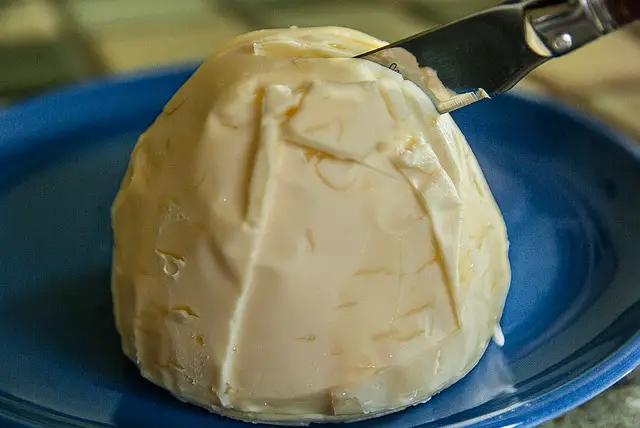If you have ever taken a good look at the dairy section of your grocery store, you have probably noticed the enormous varieties or types of butter available. It can be difficult to distinguish between butter products like unsalted butter, salted butter, European butter, and so on. Then there are the butter-like products and other so-called “butter spreads”, which we won’t even get into. It can be a confusing process trying to select an appropriate butter for your needs. Let’s take a closer look at the different types of butter.
Unsalted Butter or Sweet Butter
In simple terms, this is traditional butter without the salt. It is ideal for baking or cooking because the lack of salt means that the cook can add his/her own salt as required by the recipe. They don’t need to worry about the extra salt in the butter that can disturb the flavoring.
Salted Butter
Think of salted butter as almost a condiment style of butter. It is commonly used to spread on toast or to season vegetables. The salt in this butter adds flavor, which makes it ideal for direct eating when on top a food. Salted butter can be a problem when baking because you have to account for the salt in the butter in addition to the salt required for the recipe. This is why many recipes call for unsalted butter. Salted butter will last longer than unsalted butter because the salt preserves it.
European-Style Butter
This type of butter contains more butterfat than the above two varieties. It has about 85 percent butterfat vs approximately 80 percent for regular (American) butter. European-style butter is slow churned and cultured which creates a creamier texture with less moisture. This makes it great for baking buttery desserts or using in sauces. It is also typically more expensive than regular butter.
Whipped Butter
whipped butter is easier to spread than regular butter. It is especially spreadable if it has warmed a bit at room temperature. It is not meant to be used in baking or recipes because it contains more air than regular butter. The extra air makes it hard to figure out the volume difference between regular butter and whipped butter. This type of butter comes in salted and unsalted varieties. It is best used as a spread.
Organic Butter
Organic butter comes in unsalted and salted form. Organic means that it was produced from organic milk. The cows are purportedly pesticide free, antibiotic free, and growth hormone free. The cows are allowed to graze in the pasture for several months during the year, unlike most non-organic producing cows. In theory, this creates a healthier cow and a healthier butter product.
Light Butter
Light butter is touted as being almost 50 percent less in calories than traditional butter. You may also see it being labeled as ‘Reduced-Fat Butter’. This type of butter is meant to be used as a spread and almost always should not be used in baking because of its higher air and moisture content.
Butter Blends
This type of butter is a combination of butter and oil (canola, olive oil, vegetable oil, etc.). It creates a spreadable butter that does not need to sit out at room temperature to become spreadable. You should not substitute this butter for regular butter in baking. You will likely end up with texture and taste issue as a result.
Ghee (Clarified Butter)
Ghee is a type of clarified butter. Essentially, it is regular butter that has been heated to separate out the milk solids and to remove the moisture. What is left is a paste-like butter (at room temperature) which has a high tolerance for heat. You can use it for frying or sauteeing. While ghee is common in Southern Asia, it is gaining popularity in the United States and can be found commercially throughout America.
Flavored Butter
This is butter with added flavoring like spices,chives, herbs, and garlic. You can use it to top a steak, vegetables, and any other foods that would benefit from extra flavoring.
Raw Butter
Raw butter is unpasteurized and unprocessed butter that is made from raw cream. It is believed that raw butter is superior to pasteurized butter because its nutrients are not killed off during the pasteurization process. Of course, there is the debate on whether unpasteurized products are safe. Raw butter tends to be pricey if you can find it.

